Click below to watch the video
Did the Prophet Muhammad live in Petra or Mecca? Was he surrounded by Idols? Did he worship idols in his early life?
Transcript
Video #9 This is a general transcript of a Dan Gibson video in the series: Archaeology and Islam.
Hello, and welcome to another video in the series Archeology and Islam.
My name is Dan Gibson and today we want to examine a question that viewers have asked about Muḥammad in Petra Let me start by saying that I am making these videos to answer questions that people have asked, after seeing the documentary video, The Sacred City. If you have not seen that film then please try and watch it, as these videos will make more sense if you watch the film first. You can find it in a dozen different languages on the Sacred City website at the bottom of the screen.
In the documentary film, I demonstrate that the first Qibla direction was towards the city of Petra in southern Jordan. As we have discovered so far in this series it appears that Petra at one time was also known as Mecca. Thomas Artsruni, writing in 887 AD makes this very clear to us, as he identifies Petra, and then he lets us know that he is speaking of Mecca, “The Mecca” he says.
We also noted that all of the mosques, all over the world, in the first 100 years of Islam pointed to this city in southern Jordan. If you want to explore those mosques, then visit the website and check out the graphical interface. It allows you to examine these mosques and check the evidence for yourself. This graphical website is the latest evidence.
We have also shown in this video series that the original Ka’ba was located in the city of Petra. It is the ancient foundation in front of the large building known as the Temple of Dushara, or Qasr al-Bint. Some people imagine that the Ka’ba would have been a very large, impressive monument, but that was not the case. At this time, it was a squareish looking structure, and quite unimpressive.
We learn from Azraqi the exact size of the Ka’ba building during Muḥammad’s lifetime. Earlier in this series we measured the old foundation that is in Petra, and discovered that it is the exact size of the original Ka’ba building as described by Azrqi. It was not square, and each side had a different length. And this foundation matches each of those lengths. And don’t forget, every mosque at this time faced this building. From east, west, north, and south every Qibla faced this building. Very strong evidence that this is the original Ka’ba, located in the city of Petra.
So if this was the holy city of Islam, the place where the first Ka’ba was located, then the prophet Muḥammad would have been born and raised in this city: in Petra. It was here that his grandfather was the keeper of the Ka’ba and its grounds.
Now today, the Temple of Dushara stands directly behind the first Ka’ba. And we will learn more about this temple, in a future video. But originally, back in antiquity, the Ka’ba stood alone in this valley and it was a house of worship for the children of Ishmael.
This was the valley where Hagar wept and cried out to the Lord, because little baby Ishmael was about to die. It was in this city that she found water, in Zamzam.
Before the time of Muḥammad, the people of the city were pagans. They worshiped a variety of gods. And when we look around the city of Petra, or Mecca as some called it, we see the temples of Dushara and al-Uzza. They are there in Petra.
We see evidence of a god, with three daughters. As I have said before, gods were represented by a square block cut in the rock because God did not have a human or animal image. Here we see a carved God block in Petra. It is square. Notice inside are three smaller ones representing Dushara as the large block, and then the three daughters: El-Uzza, El-lat and El Manawat are the three smaller blocks inside.
So Muḥammad lived in a pagan city. He was born here, and he would have gone down these streets. This was his city. He would have stopped at the temples along the way. He would have known who was buried in the various tombs. As we read Islamic history it should become clear to us that before the revelation in the cave, Muḥammad was a pagan, living in a pagan city, and worshiping pagan gods.
As I say this, I know that there are people who will object. One of those is Adnan Ibrahim. He insists that Muḥammad could not have been in Petra, because there were idols there, and Muḥammad was so pure that he could not co-exist with idols. You may have heard this argument, but here in this video, I would like to answer it from Islamic sources. These are not my own idea, this is from Islamic sources; commonly used sources. First, there are numerous references in the Hadiths of Muḥammad co-existing with idols. For example, Muḥammad eats food offered on altars: Bukhari tells us this: (Sahih al-Bukhari 7:407)
Allah’s Apostle (Muḥammad) said that he met Zaid bin ‘Amr Nufail at a place near Baldah. This had happened before Allah’s Apostle received the Divine Inspiration. Allah’s Apostle presented him a dish of meat. Zaid bin ‘Amr refused to eat of it and then said, “I do not eat of what you slaughter on your stone altars (ansab) nor do I eat except that on which Allah’s Name has been mentioned on slaughtering.“
So here is a story of Muḥammad before receiving his message, having a plate of food that was offered to idols. Lets read some more, another account: this one from Al-Kharqushi it regarding pre-Islamic days. (Al-Kharqushi: Sharaf al-Mustafa) He says:
The Prophet slaughtered a lamb for one of the idols (nusub min al-ansab). Then he roasted it and carried it with him. Then Zayd ibn Amr ibn Nufayl met us in the upper part of the valley; it was one of the hot days of Mecca. When we met we greeted each other with the greeting of the Age of Jahalyia: which is: n’am sabahan. The Prophet said: “Why do I see you, O son of Amr, hated by your people?” He said, “This is without my being the cause of their hatred; but I found them associating divinities with Allah and I was reluctant to do the same. I wanted the religion of Abraham…” The Prophet said, “Would you like some food?” He said, “Yes.” Then the Prophet put before him the (meat of the lamb). Zayd ibn Amr said: “What did you sacrifice to, O Muḥammad?” “He said, “To one of the idols.” Zayd then said: “I am not one to eat anything slaughtered for a divinity other than Allah!”
So here we clearly read that in the time of Jahiliyah the Prophet Muḥammad slaughtered a lamb to the idols. It was he who slaughtered the lamb to the idols.
Then there is the cave where Muḥammad received his vision. This was a spot where young men went for religious devotion. It was in this cave where Muḥammad received the beginning of the Qur’ān. Here Bukhari tells us that the cave was filled with pagan images: Bukhari tells us: (Bukhari 6:186)
I was in the company of the Prophet in the cave, and on seeing the carvings of the pa¬gans, I said, “O Allah’s Apos¬tle! If one of the pagans should lift up his foot, he will see us.” He said, that is Muḥammad, he said: “What do you think of two, the third of whom is Allah?” Bukhari 6:186
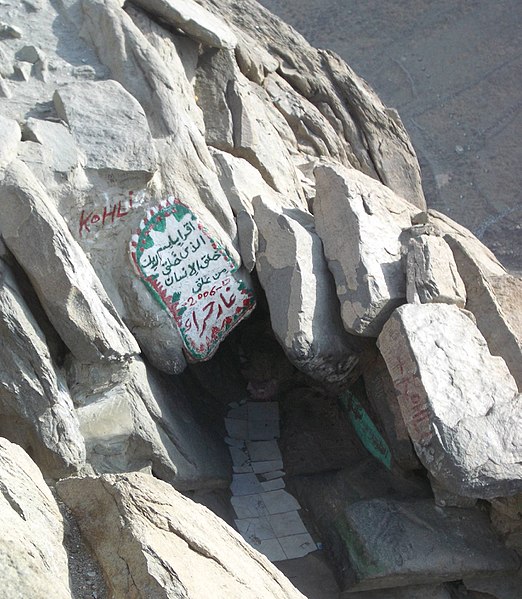
The Cave in Saudi
Now the proposed cave in Mecca in Saudi Arabia today does not contain any of these pagan carvings, but the proposed cave in Petra has these carvings.
Once again, this is all in my book Early Islamic Qiblas. I urge you to read it. I hear that there are electronic copies circulating on the Internet.
In his pre-Islamic days, Muḥammad was surrounded by idols. This is why he had to cleanse 360 idols from the Ka’ba. When he was chosen as a young man to place the Black Rock into the corner of the Ka’ba he doesn’t object to the presence of other idols. There were 359 other idols in that place. In the end, it doesn’t matter whether they were in Mecca or Petra, there were still 360 idols in one place in that city and Muḥammad was there in that place. In addition to this, in Volume 4 of his Musnad, Ahmed Ibn Hanbal (Ahmed Ibn Hanbal, Musnad vol. 4 p. 222) tells us that Khadijah, the wife of the prophet had an idol, an idol of al-‘Uzzā in her house.
In the Book of Idols, Hisham ibn al-Kalbi speaks of the prophet Muḥammad worshiping al-Uzza:
We have been told that the Apostle of God once mentioned al-Uzza saying, “I have offered a white sheep to al-‘Uzza, while I was a follower of the religion of my people.”
Ibn Kathir repeats this in his Tafsir on the Quran (Ibn Kathir Tafsir 53:19–26). Ibn Hanbal adds that the family used to worship it just before bedtime. Additionally, whenever Muḥammad complained that he was affected by the Evil Eye, Khadija used to send for an old elderly woman, a sorceress to charm it away. This was in the time of Jahaliya. (Ibn Saad, Tabaqat 1:36:2)
It seems to me that the teaching that the argument is: “Muḥammad could never have been in the presence of idols” is a rather modern day Islamic teaching not based on what the early records record. Perhaps whoever started this idea had never read the writings of the early Muslim writers.
From what we read, I understand that Muḥammad grew up in idolatry. He participated in Idolatry. And he very slowly revealed Islam to the people, just a few verses at a time, as he received them. There was no event where the entire Qur’an came down. It was just a little bit here and a little bit there. When something happened, and the people needed guidance, then Muḥammad uttered a new revelation from God. It wasn’t revealed all at once. And so, in the beginning, people wrote down the individual utterances. Often they were just a few verses or just a few lines; some given here, some given there; some in front of these people, and some in front of other people: little bits and pieces.
Some of these saying were collected into groups and named. So you have things like: The Cow, or The Woman, or The Camel. These were the individual names and people knew them by these names. It wasn’t until after the death of Muḥammad, during the lifetime of ‘Uthman, that these bits and pieces were gathered together for what seem the very first time, and given the name The Qur’an. And even after this, there were several more gatherings. It appears that under General Hajjaj there was even a further gathering of the things that Muḥammad said.
So it becomes evident that there was not a unified Qur’an. Not until much later. Scholars have gathered together many different copies of the Qur’an, and some of them had different readings. Some of them do not have all of the verses. In some they are in a different order. Some have different wordings in them.
All of this comes from the origins of Islam, where Muḥammad moved around the pagan city, and he gave the revelation at various time address different issues that he faced; little bits at a time.
It wasn’t until the Muslims moved to Medina, that the formation of a Muslim society began; and so the hijra was from Petra down to Medina.
So did Muḥammad live in a pagan city? The early writers say Yes he did. He participated.
Did Muḥammad worship pagan idols before the Cave revelation? The early Islamic writers tell us Yes he did. So why are some modern Islamic preachers upset with this? It seems they have made Muḥammad a perfect person; even before he had the revelation. You see in their minds, Muḥammad was something other than what the Islamic records tell us. You must go back and read the Islamic records. I find that very few of these preachers have read Islamic history. He wasn’t perfect. The histories make that perfectly clear. Even after the revelation, he gave into pressure, and said what is commonly called the Satanic Verses. How do you explain that? Look, I am not trying to dishonor the prophet; not at all. I am simply trying to get an honest historical picture of him from the early source material. What does it actually say about the prophet?
So it shows, as far as I can see, that Muḥammad lived in a city with a large pagan population.
Was that city, Mecca in Saudi Arabia? Archeology says no. The mosques clearly demonstrate that they all pointed to Petra. Muḥammad was born in Petra, he traveled from there to Syria on a camel caravan, and later he escaped from Petra, which was known as Mecca, and he emigrated to Medina in Saudi Arabia.
This is what the archeological evidence tells us. And there is very little in the early records to challenge it. It is all about understanding geography, and which city is referenced when the early writers called a city “Mecca.”
I am Dan Gibson, and this has been another video in the series Archeology and Islam.
Bibliography
Bukhārī, al-Tarikh al-Kabīr, al-Tarīkh al-Ṣaghīr, and al-Tarīkh al-Awsaţ
Al-Kharqushi, Sharaf al-Mustafa
Ahmed Ibn Hanbal, Musnad
Hisham ibn al-Kalbi, Book of Idols
Ibn Kathir, Tafsir
Ibn Saad, Tabaqat
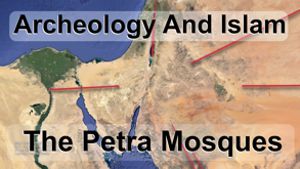
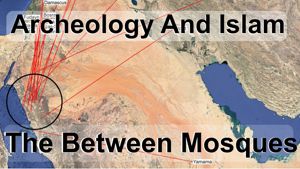
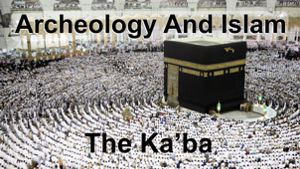
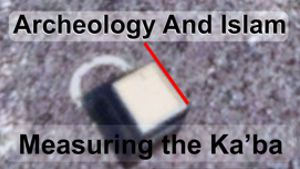

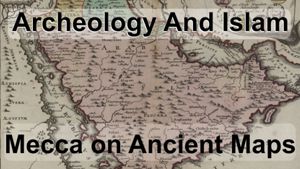
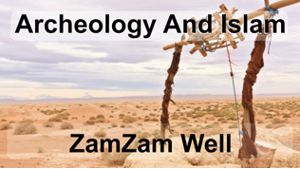
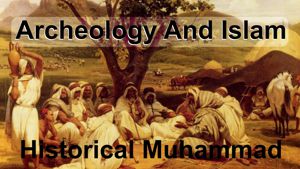
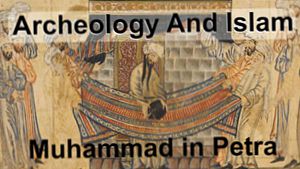
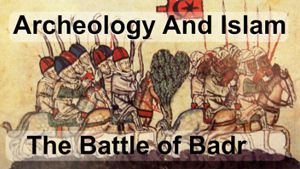
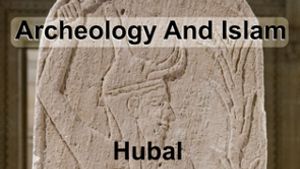
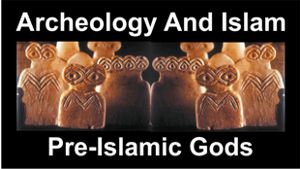
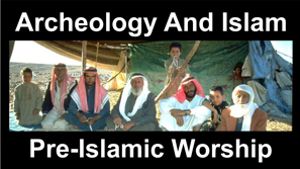

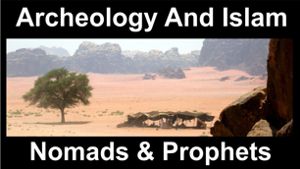
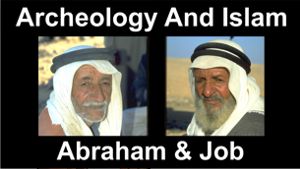
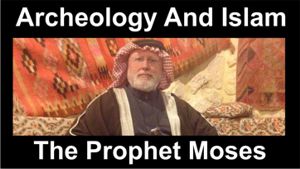
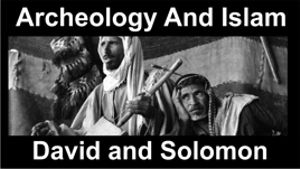

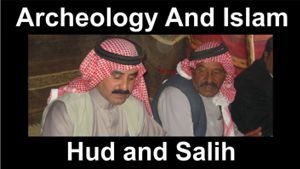
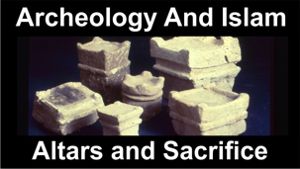
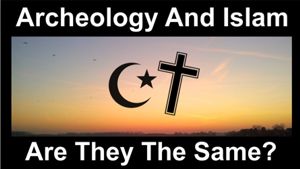
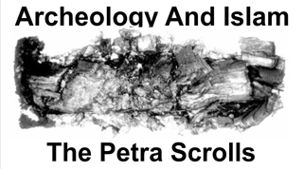
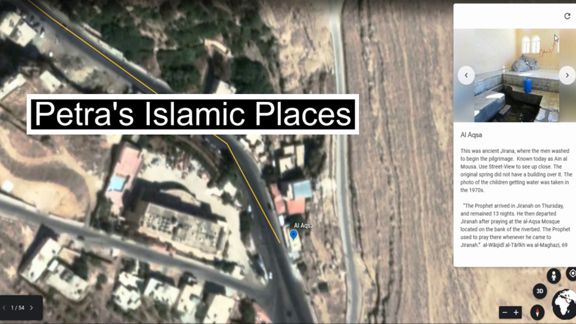

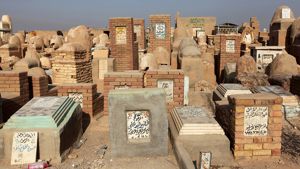
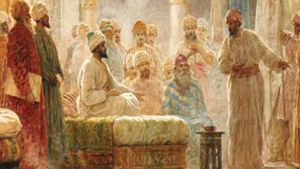
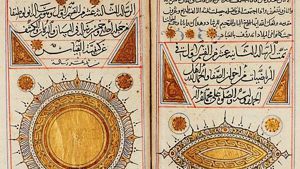
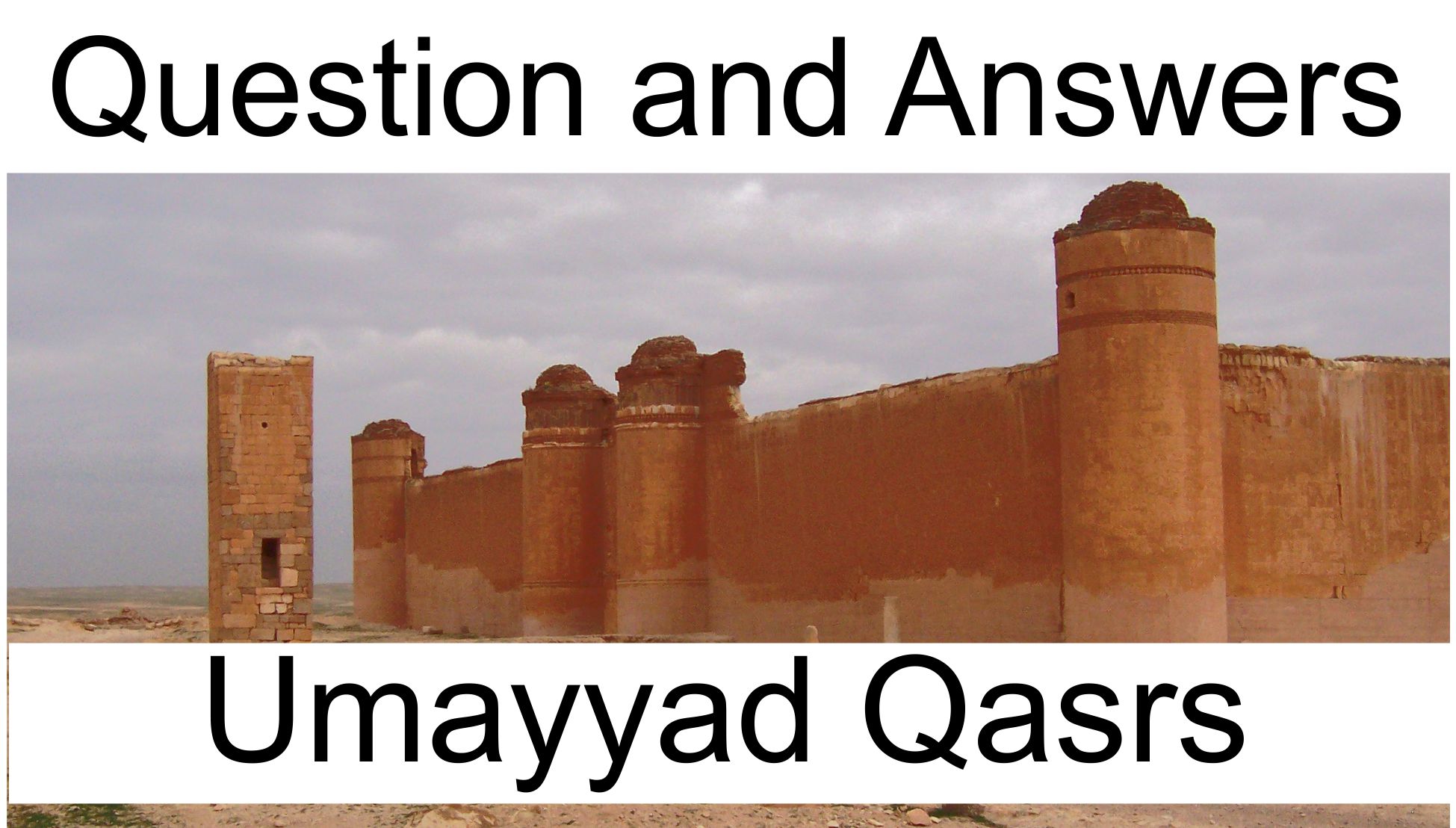
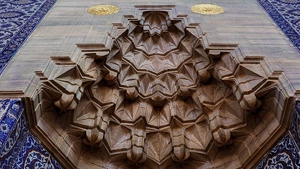
Page Discussion
Membership is required to comment. Membership is free of charge and available to everyone over the age of 16. Just click SignUp, or make a comment below. You will need a user name and a password. The system will automatically send a code to your email address. It should arrive in a few minutes. Enter the code, and you are finished.
Members who post adverts or use inappropriate language or make disrespectful comments will have their membership removed and be barred from the site. By becoming a member you agree to our Terms of Use and our Privacy, Cookies & Ad Policies. Remember that we will never, under any circumstances, sell or give your email address or private information to anyone unless required by law. Please keep your comments on topic. Thanks!